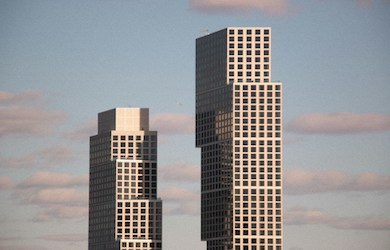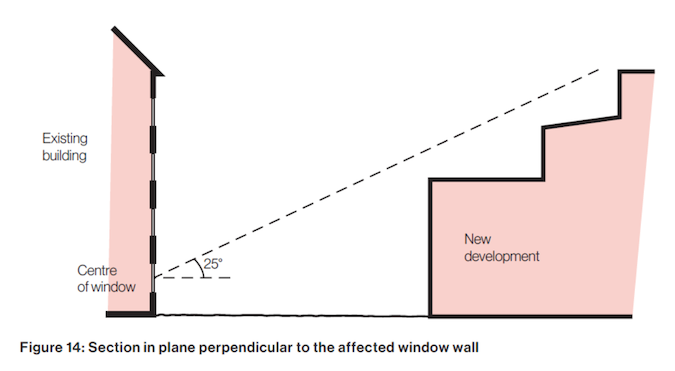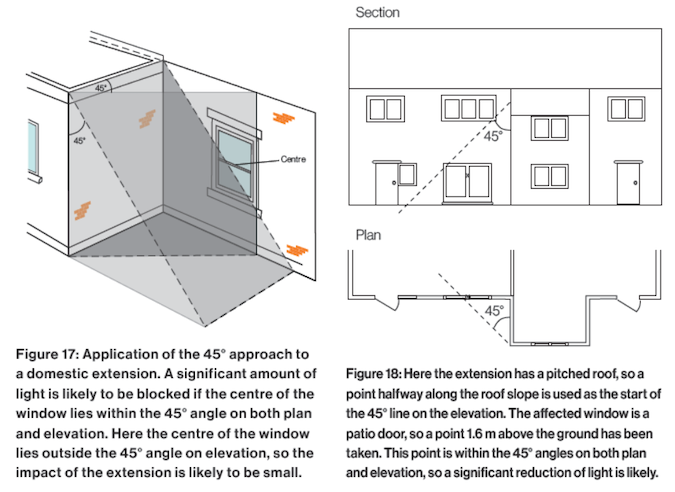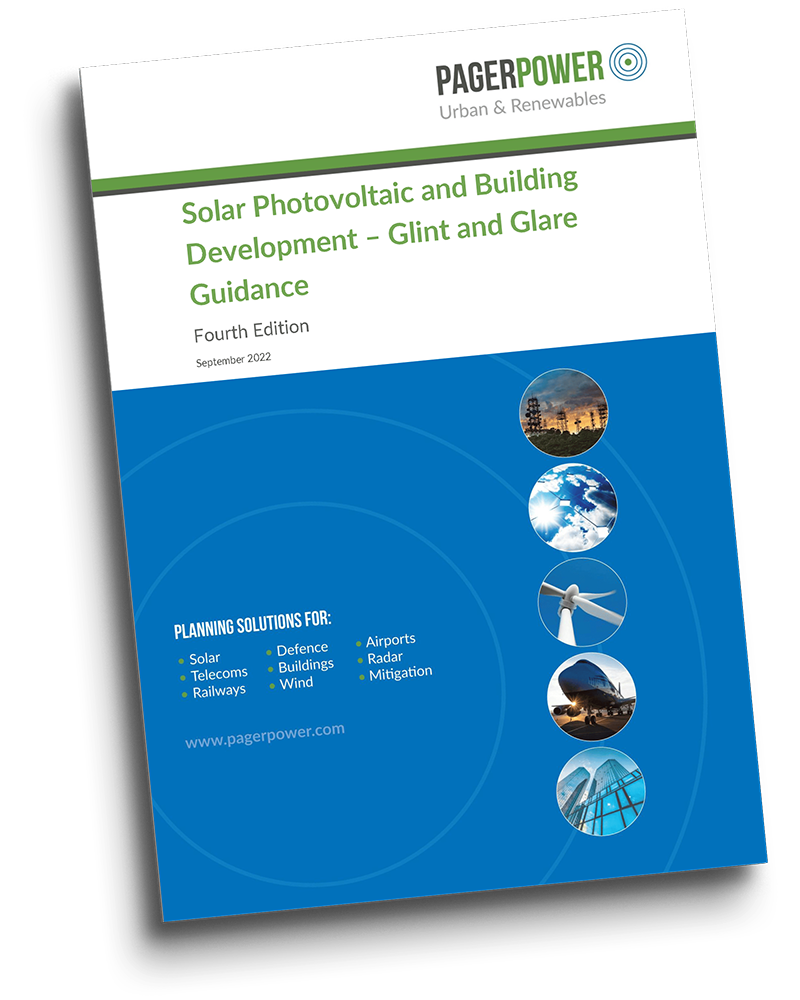Daylight Sunlight Assessments: What are the 45 and 25 Degree Rules?

Some of the most common queries we receive regarding Daylight and Sunlight Assessments are how to apply the 45 degree and 25 degree rules, and how useful they are in demonstrating whether a development complies with best practice on daylight.
The 45° rule and 25° Rule are both referenced within BRE 209, which is the most commonly applied guidance on Daylight and Sunlight [1]. More information on this guidance can be found here.
Which of the rules should I use?
Simplistically, the 45° Rule is applicable where a development or extension is beside a window, whilst the 25° Rule is used for developments opposite a window.
Due to the steep angle used for the 45° Rule, it most commonly applies when considering the effects of an extension upon the building it is adjoining or a direct neighbour.
The 25° Rule is used more widely when considering the potential impact upon a development’s neighbours. For larger developments, this may include a wide assessment area.
How should I apply the rules?
Figure 1 below shows how to apply the 45° Rule. For developments/extensions with a flat roof, the measurement is taken from the top corner of the wall, and for those with a pitched roof, it is taken from midway along the slope.
Figure 1: Diagram showing an application of the 45° Rule. [2]
Figure 2 below shows an application of the 25° Rule. This is typically measured from the centre point of the lowest window, as this will be the most restrictive measure.
 Figure 2: Diagram showing an application of the 25° Rule. [3]
Figure 2: Diagram showing an application of the 25° Rule. [3]
What does it mean if the rules are passed or failed?
If a development passes both the 45 degree and 25 degree rules, it is likely that the development will be acceptable from a daylighting perspective, though the BRE guidance advises caution when considering the 45° Rule for windows with obstructions on both sides [4].
If a development breaches one or both of the rules, it is recommended that further assessment is conducted to consider the impacts upon the provision of natural daylight. A full Daylight and Sunlight Assessment involves a more thorough assessment of the Vertical Sky Component and can also consider the Annual Probable Sunlight Hours towards windows if relevant.
What about Right of Light?
Neither of these rules relate to Right of Light, and it is possible for a development to pass the Daylight and Sunlight thresholds whilst still presenting liability for a Right of Light claim. This is because the assessments use different methodologies. If you require a Right of Light Assessment, more information can be found here.
Speak to an Expert
If you are interested in finding out more about our Daylight Sunlight Assessments, click here. If you want to find out more about our Right to Light Assessments, click here.
To make an enquiry, or give us a call on +44 (0)1787 319001.
About Pager Power
Pager Power is a dedicated technical consultancy that has been providing independent guidance and advice regarding solar developments, wind farms, and building developments internationally since 2002. Further details about the services we can provide can be found here. Pager Power has completed over 1,600 glint and glare assessments, over 1,000 aviation/radar impact assessments, over 500 television and radio reception surveys, and over 500 telecommunications impact assessments.
References
[1] Paul J Littlefair et al, ‘Site layout planning for daylight and sunlight’ (BRE 209, 3rd Edition 2022), Building Research Establishment
[2] Ibid, Figures 17 and 18
[3] Ibid, Figure 14
[4] Ibid, 2.2.18
Thumbnail image accreditation: Brooks Orich (March 2023) from Unsplash.com. Last accessed on 14th May 2025. Available at: https://unsplash.com/photos/a-couple-of-tall-buildings-sitting-next-to-each-other–ImkctnxQpchttps://www.pagerpower.com/wp-content/uploads/2025/05/DSO-degree-rules-thumbnail.jpeg








